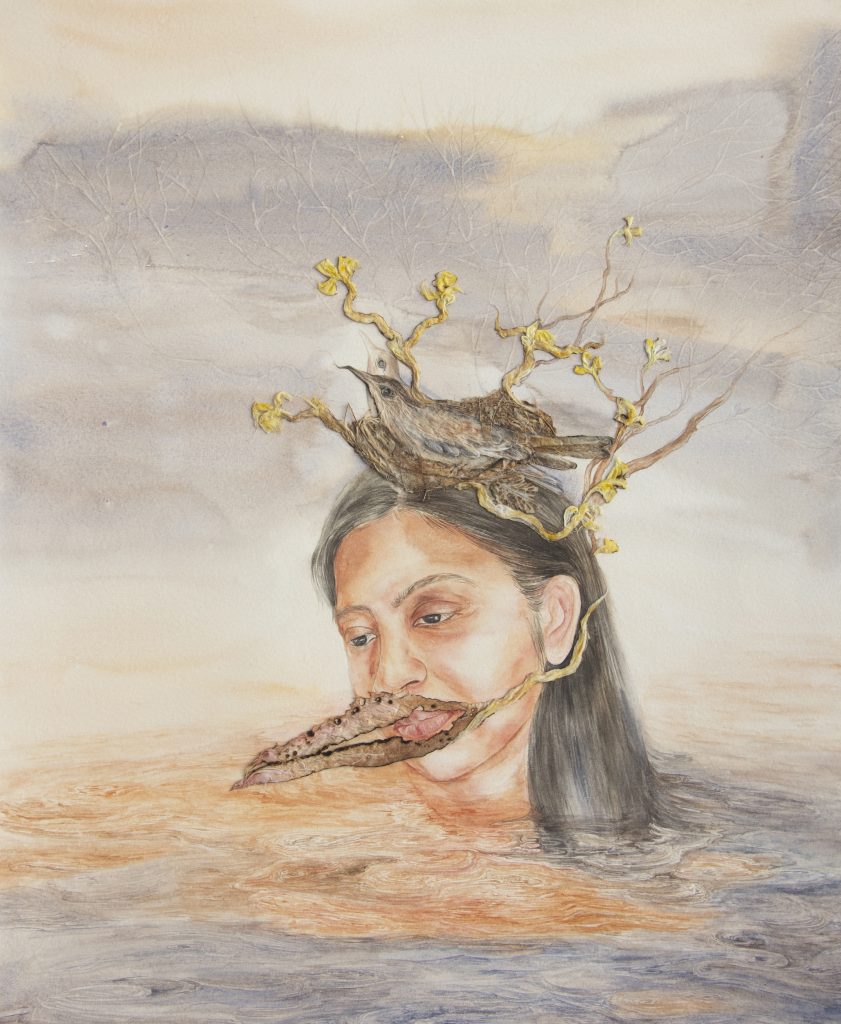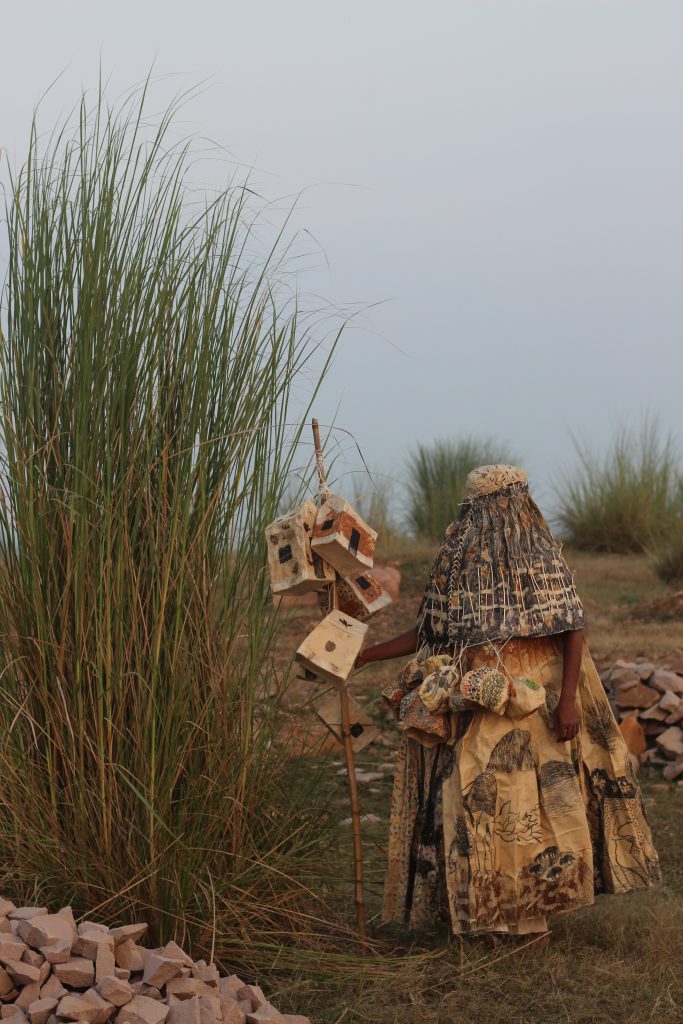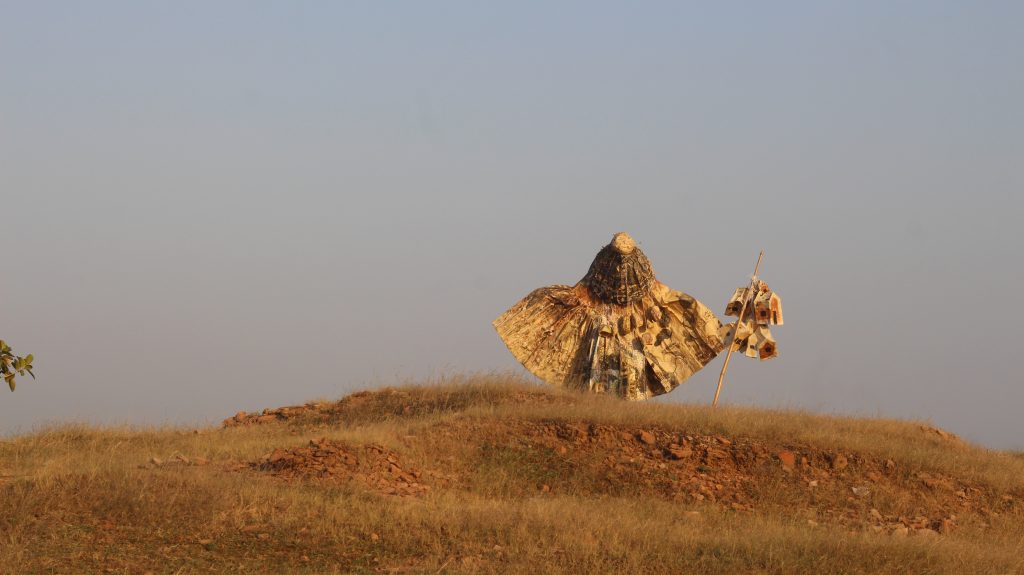Blogs
On Gender and Ecology
Mehreen Yousaf
Artists and IARF grantees, Anupama Alias and Debashish Paul use nature as a lens to create new contexts of inquiries into how they understand gender.
In June of 2021, MAP in partnership with 1Shanthiroad Studio launched a relief fund to support artists and their work during the difficult times posed by the Covid 19 pandemic. Open to all practising artists in India, the relief fund received an overwhelming response with over 1000 applications. Twenty artists were selected by an independent jury comprising Paula Sengupta, Radha Mahendru, Indrapramit Roy and Suresh Jayaram. The jury members also offered mentorship conversations to the artists.
In an attempt to showcase the exciting work that was achieved under this grant, we have placed the grantees and their artworks in conversation with each other, to respond to and facilitate a conversation around the common themes or concerns addressed in their art.
We come to understand gender in large parts through our socialisation – the communities we are part of, the groups that we identify with, the objects that we own and the spaces that we find ourselves in. In a patriarchal society, these references are riddled with rigid conventions – norms that quash non-conformist voices and fail to represent how diverse our experience of gender can be. Artists, Anupama Alias and Debashish Paul use nature as a lens to create new contexts of inquiries into how they understand gender and form references that are more emblematic of their experiences.
Living in Kerala, Alias’s work centres around ideas of gender and femininity. Her work is largely autobiographical and features her body set against puzzling backdrops in an attempt to unpack her interiority.
Going through her work, one is immediately drawn to the melancholy of it – submerged worlds, masked figures and blazing landscapes are all recurring motifs. Amidst all, one is drawn in, even more so, by the grace and tenderness with which she depicts the body; the calm countenance and poise that she deals in, signalling hope in the most trying situations.

Untitled, Anupama Alias, 2021, Mixed Medium, Image courtesy of the artist
In her work, nature is meticulously entangled with her body: her use of cotton, wood shavings and straws are devoid of any sharpness and blend seamlessly to achieve a subdued effect. When asked about the recurring presence of water bodies in her work, she spoke of the flood-inflicted landscapes of Kerala in 2018, her experience of navigating a natural disaster and how the ecological precarity mirrored and aggravated the discrimination and struggles she faced as a woman.

The cape of curiosities, Anupama Alias, 2021, Mixed Medium, Image courtesy of the artist

Untitled, Anupama Alias, 2021, Mixed Medium, Image courtesy of the artist
The artist considers her practice to be a lot like journaling: a process through which she paints her inner feelings and thoughts. In doing so, she is attempting to clarify what lay beneath the flesh and bones. Although autobiographical in nature, Alias clarifies that sometimes she chooses to transmute herself to tell the stories of other women and gender minorities that she has had the pleasure of encountering – the discrimination that they have faced and their acts of protest.
Debashish Paul is from the Nadia village in West Bengal. Their works span across a range of mediums which include sculptural dresses, performance, video, and drawing, and through which they trace queer identity. Their sculptural work is a deliberate attempt at breaking out of the gender binary: it distances itself from any specific gender orientation and treats the body as a tender landscape.
Unlike Alias’s work, Paul not only places the self in nature but strives to be one with it. They understand the fluidity of nature as casting onto the fluidity of the human psyche – as the environment is moulded by external forces, the body also transforms itself as it endures emotional change. Their work Body in a Landscape, Body as a Landscape set in Jaargo is a 45-day project that entailed the making of a sculptural dress, which they wore for their performance and its documentation in photo and video. After the completion of the sculptural dress, which was created spontaneously as a reaction to the materials found in the landscape of Jaargo (the rice paper hangings on the dress are moulds of stones found in the area), they continued to perform on those hills for three days.

Body in a Landscape, Body as a Landscape, Debashish Paul, 2021, Image courtesy of the artist
Going through the photo documentation of Body in a Landscape, Body as a Landscape you cannot miss the intricate detailing of the costume and how seamlessly the materials blend in with the surroundings. When asked about artistic stimulus during this long durational performance, Paul states that the body is always looking for proof of its own existence, which it found when allowed to be as malleable and as resilient as nature.

Body in a Landscape, Body as a Landscape, Debashish Paul, 2021, Image courtesy of the artist
Although Alias’s and Paul’s works diverge in their making and intentions, there are many similarities – in their usage of found materials, costumed elements and using their own body as a vessel, but above all they both find solace in the realisation that we are inextricably intertwined with nature.
Mehreen Yousaf is an Events Coordinator at MAP. She loves listening to music and curating playlists for her friends.








